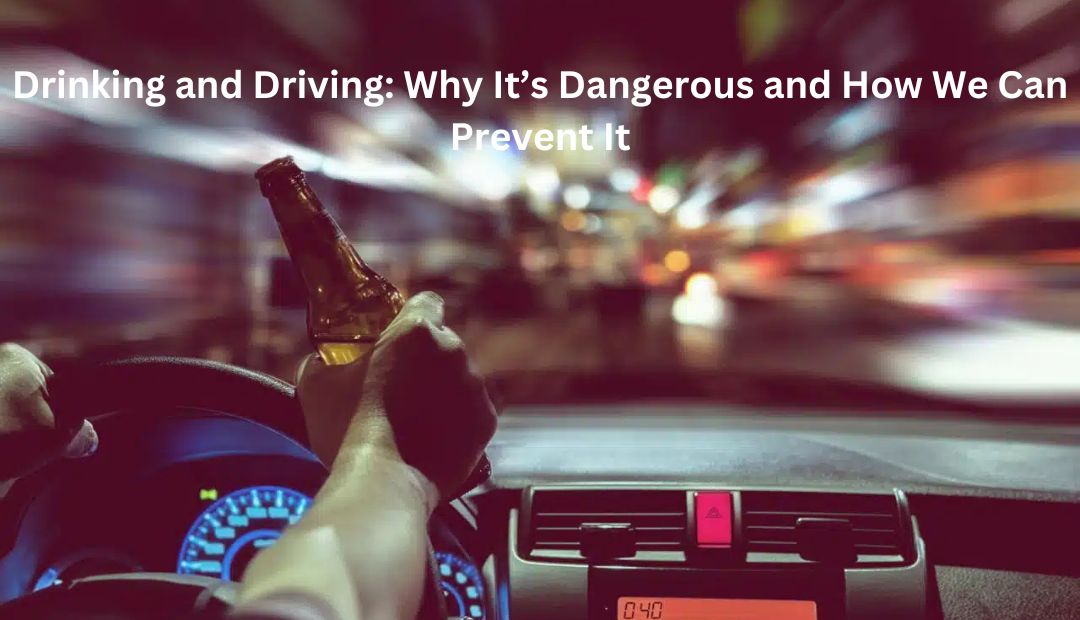Driving under the influence of alcohol remains one of the most perilous behaviors on our roads, posing a significant threat to public safety. Despite widespread awareness campaigns and strict legal consequences, the incidence of drunk driving persists, claiming thousands of lives each year.
According to the NHTSA, around 37 people die in drunk-driving crashes in the US every day. In 2021, over 13,000 people died in driving traffic deaths due to alcohol impairment in the country.
Understanding the dangers of drunk driving and implementing effective preventive measures are crucial steps toward creating safer roads for everyone.
The Perils of Drinking and Driving
Driving requires a high level of concentration, coordination, and quick reflexes. Alcohol impairs these faculties, significantly increasing the likelihood of accidents. When alcohol is consumed, it affects the central nervous system, slowing down brain function and reducing cognitive abilities. This impairment manifests in several ways:
- Intoxicated individuals often exhibit poor judgment, leading them to make risky decisions behind the wheel, such as speeding, tailgating, or attempting dangerous maneuvers.
- Alcohol affects motor skills and coordination, impairing the ability to control the vehicle effectively. This can result in swerving, drifting out of lanes, or difficulty maintaining a steady speed.
- Alcohol consumption can blur vision and impair depth perception, making it harder for drivers to accurately assess distances and detect hazards on the road.
- Intoxicated drivers are more likely to engage in reckless behaviors, such as driving at high speeds, putting themselves and others at grave risk.
- Alcohol exacerbates feelings of fatigue and drowsiness, further compromising a driver’s ability to stay alert and attentive while behind the wheel.
- According to Rochester Regional Health, alcohol consumption slows down reflexes. This makes it difficult for drivers to respond promptly to unexpected situations on the road, such as sudden stops or obstacles.
Preventing Drinking and Driving
Addressing the issue of drunk driving requires a multi-faceted approach involving education, enforcement, and societal change. Here are a few effective strategies to prevent drinking and driving.
Public Awareness Campaigns
Comprehensive public awareness campaigns play a vital role in educating the public about the dangers of drunk driving and promoting responsible alcohol consumption. These campaigns utilize various mediums, including television, radio, social media, and community events, to disseminate information and encourage behavioral change. By raising awareness and changing social norms surrounding drinking and driving, these campaigns help foster a culture of responsible decision-making.
Strict DUI Laws and Enforcement
Robust DUI laws coupled with rigorous enforcement mechanisms are essential deterrents against drunk driving. Penalties for DUI offenses should be severe enough to the point where people are totally discouraged from engaging in this dangerous behavior.
At the same time, law enforcement agencies should conduct regular sobriety checks to identify impaired drivers. Such checks need to be more frequent during the holiday season as drunk driving becomes more prevalent.
Take the case of the last holiday season in Edwardsville, Illinois. Edwardsville, during the holidays, takes on a festive look and drunk driving has become very common here during this period. Last holiday season, as reported by RiverBender, the local police arrested six impaired drivers during their holiday enforcement campaign. Any DUI victim in those incidents can simply get in touch with an Edwardsville personal injury lawyer and navigate the legal process.
Those who had to deal with a car accident due to someone else’s negligence, such as drunk driving, can file a personal injury case. The personal injury lawyer, according to TorHoerman Law, can help the victim recover any financial losses they had to suffer.
However, prevention is better than cure, and strict enforcement of mechanisms and penalties for DUI incidents is a must to prevent drunk driving.
Ridesharing and Transportation Options
The availability of convenient transportation alternatives, such as ridesharing services, taxis, and public transit, can significantly reduce the temptation to drive after drinking. Government agencies and community organizations can collaborate with transportation providers to expand access to these services, particularly in areas with limited transportation options. Promoting the use of ridesharing and other safe transportation alternatives empowers individuals to make responsible choices and avoid putting themselves and others at risk.
Ignition Interlock Devices (IIDs)
IIDs are breathalyzer-like devices installed in vehicles that prevent drivers from starting the engine if their blood alcohol concentration (BAC) exceeds a predetermined limit. Mandating the use of IIDs for individuals convicted of DUI offenses can be an effective means of reducing repeat offenses and deterring drunk driving.
As reported by Forbes, the US federal government is taking measures to mandate alcohol test systems in new American cars. Such systems, like IIDs, will prevent drivers from starting their cars let alone indulging in drunk driving.
Community Engagement and Support
Building strong community partnerships and fostering a sense of collective responsibility are essential components of any effective drunk driving prevention strategy. Community organizations, schools, and local leaders can organize awareness campaigns and support services aimed at addressing alcohol misuse and promoting safe driving practices. By working together to create a supportive environment that prioritizes safety and responsibility, communities can help prevent tragedies caused by drunk driving.
In summary, drinking and driving is never a good idea, and people need to understand that. As discussed above, from spreading public awareness to implementing strict laws, a lot can be done to prevent drunk driving. People need to be more aware of how impaired driving can harm not only themselves but others as w
